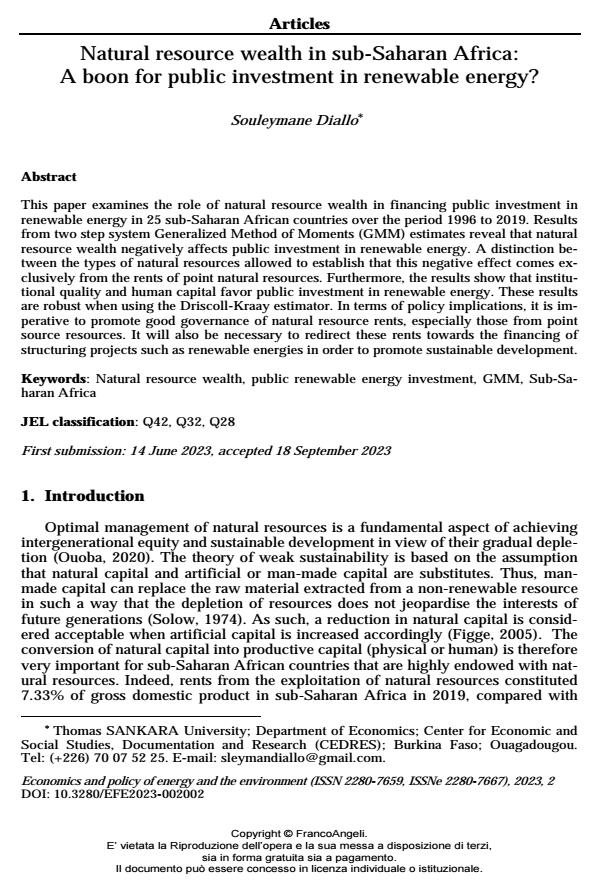Natural resource wealth in sub-Saharan Africa: A boon for public investment in renewable energy?
Titolo Rivista ECONOMICS AND POLICY OF ENERGY AND THE ENVIRONMENT
Autori/Curatori Souleymane Diallo
Anno di pubblicazione 2023 Fascicolo 2023/2
Lingua Inglese Numero pagine 22 P. 19-40 Dimensione file 223 KB
DOI 10.3280/EFE2023-002002
Il DOI è il codice a barre della proprietà intellettuale: per saperne di più
clicca qui
Qui sotto puoi vedere in anteprima la prima pagina di questo articolo.
Se questo articolo ti interessa, lo puoi acquistare (e scaricare in formato pdf) seguendo le facili indicazioni per acquistare il download credit. Acquista Download Credits per scaricare questo Articolo in formato PDF

FrancoAngeli è membro della Publishers International Linking Association, Inc (PILA)associazione indipendente e non profit per facilitare (attraverso i servizi tecnologici implementati da CrossRef.org) l’accesso degli studiosi ai contenuti digitali nelle pubblicazioni professionali e scientifiche
This paper examines the role of natural resource wealth in financing public investment in renewable energy in 25 sub-Saharan African countries over the period 1996 to 2019. Results from two step system Generalized Method of Moments (GMM) estimates reveal that natural resource wealth negatively affects public investment in renewable energy. A distinction between the types of natural resources allowed to establish that this negative effect comes exclusively from the rents of point natural resources. Furthermore, the results show that institutional quality and human capital favor public investment in renewable energy. These results are robust when using the Driscoll-Kraay estimator. In terms of policy implications, it is imperative to promote good governance of natural resource rents, especially those from point source resources. It will also be necessary to redirect these rents towards the financing of structuring projects such as renewable energies in order to promote sustainable development.
Parole chiave:Natural resource wealth, public renewable energy investment, GMM, Sub-Saharan Africa
Jel codes:Q42, Q32, Q28
- Analysis of migrant remittances’ effects on energy poverty in Sub-Saharan African countries: a threshold analysis through the role of structural factors Abdoul Hadirou Yoda, Souleymane Diallo, in International Journal of Energy Sector Management /2025 pp.1
DOI: 10.1108/IJESM-07-2025-0009
Souleymane Diallo, Natural resource wealth in sub-Saharan Africa: A boon for public investment in renewable energy? in "ECONOMICS AND POLICY OF ENERGY AND THE ENVIRONMENT" 2/2023, pp 19-40, DOI: 10.3280/EFE2023-002002